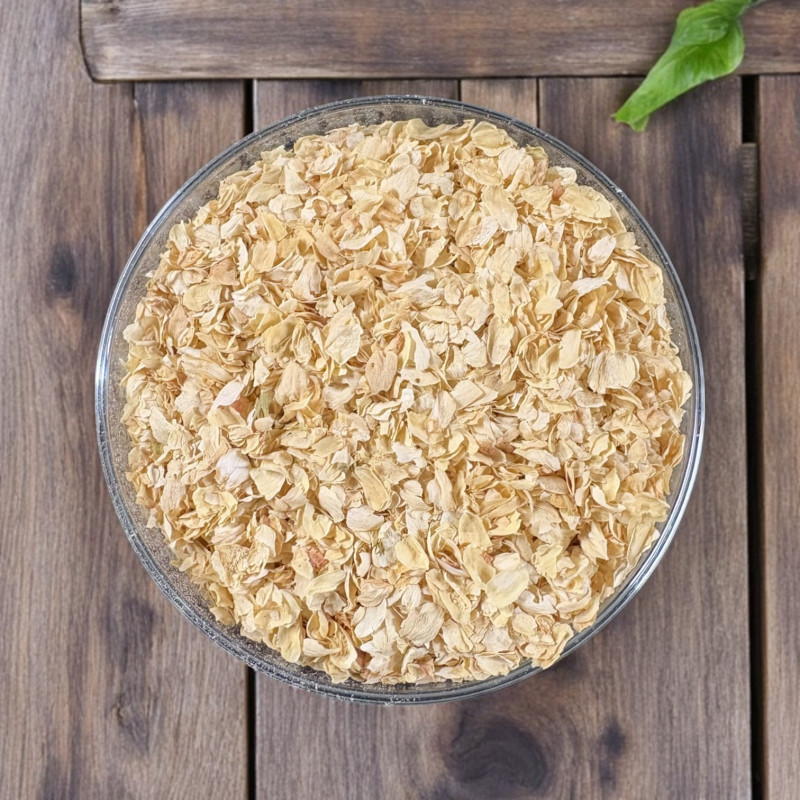
Reference: 112390010


In tea, this flower has a gentle flavor but is strong enough to complement the taste of tea, with which it has been paired for a long time.
It can also be used to decorate dishes and salads, as well as in potpourris.
 Delivery
Delivery
Mondial Relay
 Returns
Returns
See conditions
 Payments
Payments
100% secure
Livré en sachet refermable
Uses in Cooking and Beyond:
This flower delicately perfumes your tea, whether green, white, or black, as done in China. Simply mix a generous portion of flowers (about 1/4 flowers to 3/4 tea) and steep with your tea in simmering water for a few minutes. Its flavor is gentle, floral, yet resilient, creating a delightful drink for any time of day.
You can also enjoy jasmine on its own as an infusion, or paired with rosebuds or petals for a mild, calming blend that aids sleep.
Jasmine is one of the two queen flowers in perfumery, alongside the rose.
It also adds a lovely touch to personalized potpourris.
Who am I?
Origin: China
Scientific name: Jasminum officinale
Common name: White Jasmine
Jasmine officinale is known for its calming, soothing properties, and is recommended to combat stress and depression.
It is a climbing shrub from the Oleaceae family, with long, twining stems that can reach up to 5 meters. Jasmine has deciduous to semi-evergreen foliage, with a fragrant, abundant white-yellowish bloom throughout the summer. The flowers are harvested from May to August. Most jasmine species (over 200) originate in the Himalayan regions and China, but only three are used in perfumery, and just one is edible.
In France, Grasse has specialized in jasmine cultivation for perfumery, though this tradition has become rare due to high labor costs. Jasmine flowers are harvested from May to August, picked just before dawn and quickly dried.
To produce 1 kg of absolute jasmine essence, about 7 million flowers are needed—explaining the high cost of perfumes containing it!
A Little History:
Jasmine was introduced to Europe from China in the 16th century.
The name "jasmine" comes from the Arabic "yâsamîn," borrowed from Persian. This name is also the root of the female name "Yasmina" (or "Yasmine"). In the East, jasmine has long been regarded as a symbol of beauty and femininity.
White jasmine is the emblematic flower of Tunisia. According to legend, Cleopatra sailed to meet Mark Antony on a boat with sails scented with jasmine essence!
Data sheet
 Marja J.
Marja J.
??

 Marja J.
Marja J.
??

Reference: 112390010
Reference: rosepetale
Reference: bleuet
Reference: 26545D
Reference: rosepetale
Reference: rosepetale
Reference: souci
Reference: 408190301
Reference: mauve
Reference: camomilleRom
Reference: 112390010
Reference: 10M6810601

In tea, this flower has a gentle flavor but is strong enough to complement the taste of tea, with which it has been paired for a long time.
It can also be used to decorate dishes and salads, as well as in potpourris.